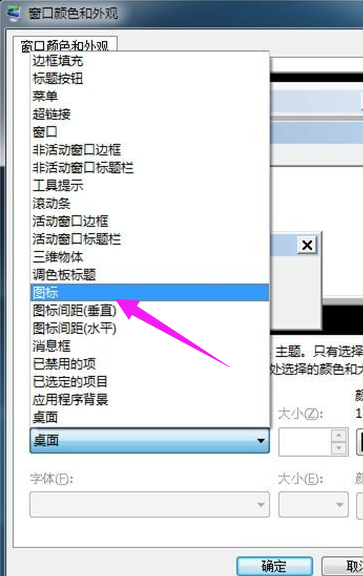当前位置:网站首页>Mathematical modeling -- what is mathematical modeling
Mathematical modeling -- what is mathematical modeling
2022-07-07 15:04:00 【WangLanguager】
This paper mainly introduces two examples of data modeling : Make dumplings 、 Roadblock
Introduce the whole process of data modeling
Introduce the basic methods and steps of mathematical modeling
One 、 introduction
mathematics : The foundation of each discipline , A tool for social progress
Solve any practical problem with mathematical methods , We must build a bridge between practice and Mathematics .
To solve the process : Practical problems are transformed into mathematical problems ; Solving mathematical problems ; Mathematical solutions return to practical problems .
This process of solving is called mathematical modeling , That is to establish a mathematical model for practical problems .
Two 、 Examples of mathematical modeling 1: Make dumplings
Usually ,1kg Noodles ,1kg Stuffing , package 100 A dumpling ( Or Tangyuan ), today 1kg The face does not change , But the stuffing ratio 1kg More , ask : It should be more packages ( Each is smaller ), It's better to pack a few less ( Each is bigger )?
1、 problem : Round area  A skin of , Pack into volume
A skin of , Pack into volume  Dumplings ; It is divided into n Skin , The area of each small circle is :
Dumplings ; It is divided into n Skin , The area of each small circle is : , The wrapped volume is :
, The wrapped volume is : Dumplings .
Dumplings .
 and
and  Who is big ? 【 qualitative analysis 】
Who is big ? 【 qualitative analysis 】
 Than
Than  How much larger ? 【 quantitative analysis 】
How much larger ? 【 quantitative analysis 】
2、 hypothesis (1)、 The thickness of dumpling skin is the same (2)、 The shape of dumplings is the same
modeling : =
= (1)
(1)
 ,
,  , among
, among  For the radius of dumplings , be
For the radius of dumplings , be  (2)
(2)
 ,
, , among
, among  For the radius of small dumplings , be
For the radius of small dumplings , be  (3)
(3)
from (1)、(2)、(3) Available :
application : ,
,  yes
yes  Of
Of  times .
times .
if 100 A dumpling can be made 1kg Stuffing , be 50 A dumpling can be made  kg Stuffing
kg Stuffing
3、 The basic key steps of dumpling modeling process
(1) In mathematical language ( Volume and surface area ) Indicates a real phenomenon ( Stuffing and skin ).
(2) Make simplified and reasonable assumptions ( Same thickness , Same shape ).
(3) Use the inherent law contained in the problem ( Volume 、 Geometric relationship between surface area and radius )
The results of this model can be used to explain many phenomena in daily life .
Over time, the unit price of large package goods is cheaper than that of small package goods .
3、 ... and 、 Examples of mathematical modeling 2: Car barricade
1、 background : campus 、 In the middle of the road in the residential area , Roadblocks are often set up to limit the speed of cars .
2、 problem : If you want to limit the speed to no more than 40km/h, How far away should a barricade be set ?
3、 analysis : The speed of the car passing the barrier is close to zero , Accelerate after passing the barrier , The car accelerated to 40km/h when , Slow down because there is the next roadblock ahead , The speed at the barricade is close to zero .
So fast 、 The deceleration cycle alternates to achieve the purpose of speed limit .
4、 hypothesis : The car performs equal acceleration and equal deceleration between two adjacent roadblocks .
You need to get the acceleration and deceleration of the car .
Method 1 : Access to information , Method 2 : To test
(1) Test data of accelerating car
| Speed (km/h) | 0 | 10 | 20 | 30 | 40 |
| Time (s) | 0 | 1.6 | 3.0 | 4.2 | 5 |
(2) Test data of vehicle deceleration
| Speed (km/h) | 40 | 30 | 20 | 10 | 0 |
| Time (s) | 0 | 2.2 | 4.0 | 5.5 | 6.8 |
5、 modeling : The distance the car accelerates S1, Time t1, The acceleration a1
The distance the car slows down S2, Time t2, deceleration a2, The speed limit is :
be : ,
,  ,
,  ,
, 
Total distance traveled between adjacent roadblocks :
Given  , From the test data a1 and a2, You can figure it out S.
, From the test data a1 and a2, You can figure it out S.
The total distance traveled by vehicles between two adjacent roadblocks is designed as the distance between roadblocks .
Parameter estimation : The relationship between speed and time during design driving is : , Test data , Then use the least square method to calculate :
, Test data , Then use the least square method to calculate :




be :
The distance between roadblocks is 65 rice
6、 The basic key steps of barrier spacing modeling
(1) Make simplified and reasonable assumptions ( Wait for acceleration, wait for deceleration ).
(2) Use the inherent law contained in the problem ( Time 、 distance 、 Speed 、 The physical relationship between accelerations )
(3) Estimate the parameters of the model according to the test data ( Acceleration and deceleration )
Mathematical modeling used in barricade design can also be used to solve other problems , for example : Design the height of the barricade 、 The shape of the barricade .
Four 、 What is a mathematical model (Mathematical Model) And mathematical modeling (Mathematical Modeling)?
1、 mathematical model : For a real object , For a specific purpose , According to its inherent law , Make the necessary simplifying assumptions , Use appropriate mathematical tools , Get a mathematical structure .
2、 mathematical modeling : The whole process of establishing mathematical model
3、 The whole process of mathematical modeling :
Information of real objects ——>【 describe 】——> mathematical model ——>【 solve 】——> Solutions to mathematical models ——>【 explain 】——> Solutions to real objects
two “ translation process ”: Real phenomena are translated into Mathematics Model , The solution of mathematical model is translated into the solution of real phenomenon .
practice ——> theory ——> practice
5、 ... and 、 The basic analysis method of mathematical modeling
(1) Mechanism analysis : Understanding of the characteristics of objective things , The quantitative law of internal mechanism .【 White box model 】
(2) Test and analysis : Statistical analysis of measured data , The model that best fits the data .【 Black box model 】
(3) Mechanism analysis 、 Test and analyze the combination of the two : Mechanism analysis and establishment of model mechanism , Test and analyze to determine the model parameters .【 Grey box model 】
Mechanism analysis is mainly learned from case studies , Modeling mainly refers to mechanism analysis .
6、 ... and 、 Basic steps of mathematical modeling
Model preparation ——> The model assumes ——> Model composition ——> Model solving ——> model analysis ——> Model test ——> Model application
If the model test finds that the model is not suitable , The model assumptions need to be corrected again
7、 ... and 、 Summary of content
Have a preliminary understanding of what mathematical modeling is
(1) Mathematical modeling refers to transforming practical problems into mathematical problems , Then solve the mathematical problem , The whole process of returning to practical problems after solving mathematical problems and constantly revising mathematical models .
(2) Mathematical modeling widely exists in all fields of social life .
边栏推荐
- JSON解析实例(Qt含源码)
- Wechat applet - Advanced chapter component packaging - Implementation of icon component (I)
- Jetson AGX Orin CANFD 使用
- Protection strategy of server area based on Firewall
- 一个需求温习到的所有知识,h5的表单被键盘遮挡,事件代理,事件委托
- Niuke real problem programming - day14
- Cocoscreator operates spine for animation fusion
- 什么是pv和uv? pv、uv
- 什么是数据泄露
- Integer learning
猜你喜欢

拼多多败诉,砍价始终差0.9%一案宣判;微信内测同一手机号可注册两个账号功能;2022年度菲尔兹奖公布|极客头条...

13 ux/ui/ue best creative inspiration websites in 2022

CTFshow,信息搜集:web14

智汀不用Home Assistant让小米智能家居接入HomeKit

Ctfshow, information collection: web13

时空可变形卷积用于压缩视频质量增强(STDF)

用于增强压缩视频质量的可变形卷积密集网络

【服务器数据恢复】戴尔某型号服务器raid故障的数据恢复案例

防火墙基础之服务器区的防护策略

Computer win7 system desktop icon is too large, how to turn it down
随机推荐
Novel Slot Detection: A Benchmark for Discovering Unknown Slot Types in the Dialogue System
Andriod --- JetPack :LiveData setValue 和 postValue 的区别
激光雷達lidar知識點滴
[understanding of opportunity -40]: direction, rules, choice, effort, fairness, cognition, ability, action, read the five layers of perception of 3GPP 6G white paper
Comparable and comparator of sorting
Full details of efficientnet model
leetcode 241. Different Ways to Add Parentheses 为运算表达式设计优先级(中等)
The method of parsing PHP to jump out of the loop and the difference between continue, break and exit
PAT 甲级 1103 Integer Factorizatio
C# 6.0 语言规范获批
Ctfshow, information collection: web12
缓冲区溢出保护
CTFshow,信息搜集:web4
Bits and Information & integer notes
What is the process of ⼀ objects from loading into JVM to being cleared by GC?
Es log error appreciation -- allow delete
暑期安全很重要!应急安全教育走进幼儿园
Cocoscreator resource encryption and decryption
leetcode:648. Word replacement [dictionary tree board + find the shortest matching prefix among several prefixes]
Find your own value